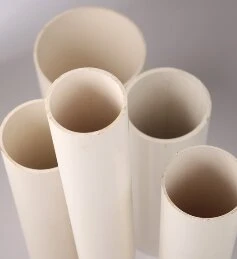Dec . 11, 2024 11:21 Back to list
hdpe sheet sizes
Understanding HDPE Sheet Sizes A Comprehensive Guide
High-Density Polyethylene (HDPE) sheets are a popular choice in various industries, from construction to packaging and beyond, due to their excellent durability, chemical resistance, and versatility. When working with HDPE, understanding the available sheet sizes is crucial for ensuring you select the right product for your project. This article explores the common dimensions of HDPE sheets, their applications, and tips for selecting the right size.
Common Sizes of HDPE Sheets
HDPE sheets come in a variety of thicknesses and dimensions. Typically, the most common thicknesses range from 1/8 inch (3.2 mm) to 1 inch (25.4 mm). However, custom thicknesses can also be ordered depending on specific needs. The standard sheet sizes often found in the market are
- 4' x 8' (1220 mm x 2440 mm) - 4' x 10' (1220 mm x 3050 mm) - 5' x 10' (1525 mm x 3050 mm) - 6' x 12' (1830 mm x 3660 mm)
These standard sizes make it easier to purchase and handle the sheets for various applications, reducing waste and maximizing efficiency.
Applications of HDPE Sheets
1. Construction and Architecture HDPE sheets are widely used in construction for waterproofing, underlayment, and as a protective liner in various applications, including foundations and drainage systems. Their weatherproof characteristics make them ideal for outdoor use.
2. Packaging In the packaging industry, HDPE sheets are utilized to create containers, crates, and pallets due to their sturdiness and resistance to chemicals.
3. Food Processing Since HDPE is food-safe, it is often used in the food industry for cutting boards, countertops, and other surfaces where hygiene is a priority.
hdpe sheet sizes

4. Industrial Uses The automotive and aerospace sectors frequently use HDPE sheets for various components because they can withstand exposure to different chemicals and harsh conditions.
5. Marine Applications The moisture resistance of HDPE makes it a popular choice for boat fenders, docks, and other marine applications, ensuring longevity even in tough environments.
Choosing the Right Size
When selecting HDPE sheets for your project, consider the following factors
- Project Requirements Determine the specific requirements of your project. Consider dimensions, weight, and strength necessities. For instance, larger sheets might reduce the number of seams in applications like liners or walls.
- Transport and Handling Larger HDPE sheets can be cumbersome to transport and handle. Assess the available space, equipment, and manpower for moving and manipulating the sheets.
- Cost Efficiency Buying larger sheets can sometimes be more cost-effective, as it reduces the need for additional cuts and minimizes material waste. Evaluate your project to decide if investing in larger sheets might save costs in the long run.
- Customization Options If your project requires specific dimensions not available in standard sizes, consider custom-cut sheets. Many suppliers offer cutting services that can meet your exact specifications.
Conclusion
HDPE sheets are a remarkable material choice for a multitude of applications due to their adaptability and strength. By understanding the various sizes available, the applications they serve, and the factors that influence your selection, you can make more informed decisions. Whether you are in construction, packaging, or another industry, acquiring the right size of HDPE sheet can significantly impact the success of your project. Be sure to consult with suppliers and industry professionals to find the most suitable options for your specific needs.
-
High-Quality PPR Pipes and Fittings Durable ERA PPR & PVC PPR Solutions
NewsJul.08,2025
-
Black HDPE Cutting Board - Durable, Non-Porous & Food Safe HDPE Plastic Cutting Board
NewsJul.08,2025
-
High-Quality CPVC Panel Durable HDPE & PVC Panels Supplier
NewsJul.08,2025
-
Double PE Welding Rod Supplier - High Strength, Durable & Versatile Welding Solutions
NewsJul.07,2025
-
High-Quality PVC-O Pipe Supplier Durable 75mm PVC Pipe & Connections Leading PVC Pipe Company
NewsJul.07,2025
-
HDPE Drainage Pipe Supplier – Durable & Corrosion-Resistant Solutions
NewsJul.06,2025

